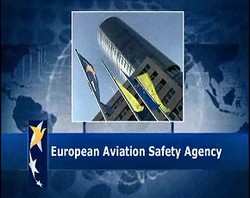Wed, Mar 06, 2013
Pushing For A Redefinition Of 'Commercial' Aviation In Europe
IAOPA has responded to European moves towards a general aviation safety strategy with a series of suggestions aimed at improving EASA regulation of GA and reducing unnecessary burdens on the industry. The Association is continuing its push for a redefinition of ‘commercial’ aviation which moves away from the all-encompassing EASA notion that virtually anything where money changes hands is commercial – including cost-sharing by private pilots, business-related flights, and group ownership of aircraft. It also believes that such pursuits as air racing and charity flights should not be considered commercial.

IAOPA also wants EASA to accelerate work on Phase 2 of the reconsideration of the Part M maintenance requirements to relieve some of the cost and bureaucracy burdens that have been improves with no improvement in safety. Some of the mistakes made with Part M are being repeated with EASA’s moves towards creating Approved Training Organisations, which face greatly increased bureaucratic requirements and costs with no apparent safety goal. IAOPA says many small flight training organisations will be unable to cope with the additional administration requirements and wants costly and burdensome changes to be revisited before they are forced on the industry. There are also concerns over instructor and examiner requirements
IAOPA is also seeking to simplify the Agency’s stance on GPS approaches at GA fields, reconsider inflexible laws on oxygen installation, and step back from its determination to kill of the UK’s Instrument Meteorological Conditions rating, allowing it at least to continue in the UK, where it has saved many lives in its 40 years of operation.

It seeks an interpretation of the ICAO language proficiency requirements to restrict them to airspace and aerodromes where an air traffic control service is required and a change to medical requirements to exclude fewer private pilots unnecessarily from the industry. Third country registration issues, it says, should be dealt with through a validation system, and STCs from ICAO-contracting states should be acceptable to all. There should be no need for EASA to approve minor modification.
In conclusion, IAOPA says the EASA requirement to achieve “a high, uniform level of safety” is too amorphous, and in suggesting that safety levels for airliners should be identical to those for paragliders or small helicopters it places too great a burden on GA. The Basic Regulation governing EASA’s work should be modified to reflect this.
IAOPA’s full submission will be made available when it is finalized.
More News
Charted Visual Flight Procedure Approach An approach conducted while operating on an instrument flight rules (IFR) flight plan which authorizes the pilot of an aircraft to proceed >[...]
“When l became the Secretary of Defense, I committed to rebuild our military to match threats to capabilities. Drones are the biggest battlefield innovation in a generation, >[...]
Aero Linx: Stearman Restorers Association Welcome to the Stearman Restorers Association. The Stearman Restorers Association is an independent “Not for Profit” 501C-3 Co>[...]
Airplane Exhibited A Partial Loss Of Engine Power When It Was About Halfway Down The Runway Analysis: The pilot of the experimental amateur-built airplane was departing from his pr>[...]
The Flight Path Was Consistent With Low-Altitude Maneuvering On June 18, 2025, about 0922 mountain standard time, a Cessna A150L airplane, N6436F, was substantially damaged when it>[...]
 ANN's Daily Aero-Term (07.15.25): Charted Visual Flight Procedure Approach
ANN's Daily Aero-Term (07.15.25): Charted Visual Flight Procedure Approach Aero-News: Quote of the Day (07.15.25)
Aero-News: Quote of the Day (07.15.25) ANN's Daily Aero-Linx (07.15.25)
ANN's Daily Aero-Linx (07.15.25) NTSB Final Report: Kjelsrud Gary Kitfox
NTSB Final Report: Kjelsrud Gary Kitfox NTSB Prelim: Cessna A150L
NTSB Prelim: Cessna A150L




